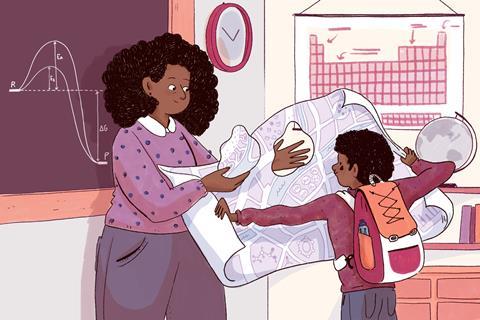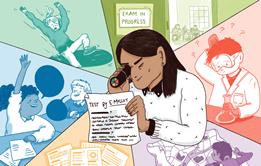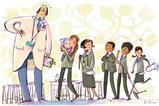Andy Chandler-Grevatt explains how you can develop your questioning skills to improve students’ grasp of chemistry concepts

Experienced teachers notice when a student is going wrong, interpret the problem, and select an appropriate intervention. This skill is often taken for granted by experienced teachers but seen as almost a mystical talent by trainee and non-teacher observers. How can teachers build this key aspect of teacher assessment literacy?
To interpret and intervene effectively, teachers need good subject knowledge, a working mental map of chemistry, and an appreciation of common misunderstanding and misconceptions. In the classroom, experienced teachers can judge when the whole group, a small number of students or an individual student misunderstands a particular concept and take action to remedy this. Beverley Bell and Bronwen Cowie researched these formative assessment skills, observing science teachers in New Zealand and identifying two approaches: planned and interactive. They looked at the behaviours of the teacher in these situations. In planned formative assessment, teachers elicit student responses, interpret those responses and act on them. In interactive formative assessment, teachers have to notice, interpret and respond to their students. So how can you develop these skills?
Ask and respond
Teachers often set up situations for their students to respond to, to look for gaps in learning. For example, a teacher could show students a displacement reaction and ask them to explain it through verbal or written questions.
Teachers will already have their mental map of the type of response they would expect from a learner at this stage and know the potential misunderstandings and misconceptions, so they are ready to spot any difficulties and intervene.
The next step is to intervene by responding appropriately to a learner’s errors, usually in the form of a question. There are typically four reasons for mistakes and questions can help to diagnose the error: lack of knowledge, a missing connection, misunderstanding, or misconception. Once you know the reason behind an error, you can intervene.
Use appropriate interventions
A lot of errors can be remedied by asking the right question at the right time. When a response is incorrect, teachers can diagnose the type of error through general or specific questions.
Questions
General questions
- Why do you think that?
- How sure are you of your answer?
- Can you explain your thinking to me?
Specific questions
- Why does the solution’s colour change?
- What happens to the nail (iron) in the solution?
- What type of reaction is this? What does that mean?
When you are teaching a topic for the first time, or you want to improve, add these questions to your mental map and work out how you might respond to particular misconceptions.
Going back a few steps in the learning is often a helpful approach if a learner has missing knowledge or a missing connection. For example, revisiting the reactivity series, any previous examples of displacement reactions or the features of chemical reactions could be useful start points.
Model answers
Talking through and questioning ideas during a live demonstration can help focus students’ thinking. For example, it might be helpful to draw a macroscopic diagram of the reaction, before, during and after, and include keywords and concepts. Then you can draw particle diagrams to illustrate each stage. Consider using the I/We/You approach: I show you, we do an example together, you then do it independently. It is helpful to have a developed library of good explanations for key concepts.
Finally, it all takes practice. Develop your own selection of practice questions and activities to help embed knowledge and increase learners’ confidence by giving them time to practice, make mistakes and correct their errors.
The next article in the series will look at how to improve your assessment literacy through knowledge of examinations.

6 ways to develop your assessment skills

Master the essentials of assessment to maximise your students’ learning
- 1
- 2
- 3
 Currently
reading
Currently
reading
Interpretation and intervention skills
- 5
- 6
- 7


























No comments yet